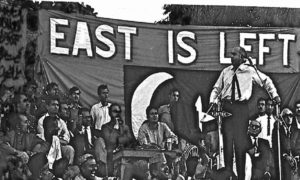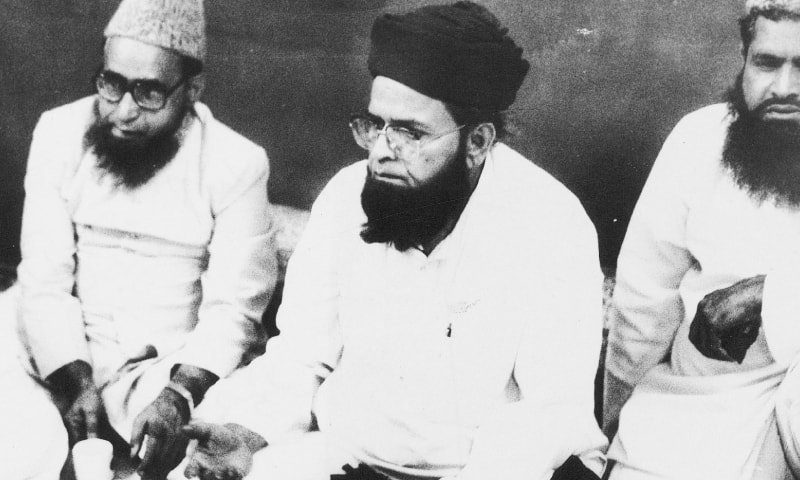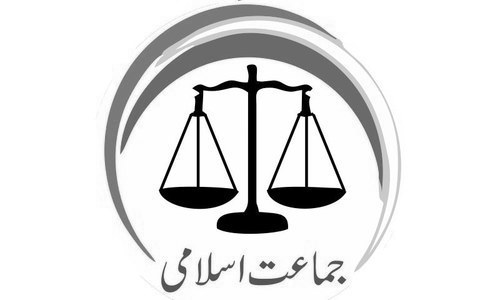
Prelude

1968: A violent and mostly left-wing protest movement erupted against the decade-long ‘modernist’ and ‘pro-US’ regime of Field Marshal Ayub Khan. The government was accused of indulging in ‘crony capitalism’ and blamed for increasing poverty.

March 25, 1969: Ayub resigned in March 1969 and handed over power to Gen Yahya Khan who imposed the country’s second martial law. During his first address to the nation, Yahya insisted that his sole aim was ‘the creation of conditions conducive to the establishment of a constitutional government.’

November 28, 1969: Yahya announced that the country’s first general election based on adult franchise would be held on October 5, 1970. He added that an elected National Assembly will draft a new manifesto within 120 days.

January 1970: Ban on political activities was lifted.
Campaigning Begins: The Main Contenders

The Awami League (AL): Formed in the 1950s, the AL became a strong Bengali nationalist party. It was secular and left-leaning in orientation and campaigned for the economic and political rights of the Bengali-majority East Pakistan which the party claimed were being ‘usurped by the West Pakistan ruling elites.’

1970: AL chief, Mujeeb-ur-Rehman, at a huge election rally in Dhaka in former East Pakistan.

Pakistan People’s Party (PPP): Formed in 1967 by ZA Bhutto, the PPP quickly rose to become a popular force in West Pakistan. Its ideological disposition was left-leaning, populist and largely secular; but it advocated an economy based on what it called ‘Islamic Socialism:’ A fusion of socialism and the ‘egalitarian aspects of Islam.’

Bhutto kicked off his party’s election campaign by holding a rally at Karachi’s Nishtar Park.

National Awami Party-Wali (NAP-Wali): NAP was formed in 1958 by left-wing Baloch, Pashtun, Bengali and Sindhi nationalists. In 1967 it broke into two factions: The pro-Soviet faction became NAP-Wali and the pro-China faction became NAP-Bhashani. NAP-Wali was the larger faction. It was socialist, secular and demanded provincial autonomy for Sindh, NWFP, Balochistan and East Pakistan. Pashtun nationalist Wali Khan, and Baloch nationalist Ghaus Baksh Bizenjo were its main leaders.

NAP leader, Wali Khan, is greeted by supporters in Peshawar during his party’s election campaign.

Convention Muslim League (ML-Convention): Formed in 1962 by Ayub Khan, ML-Convention was a quasi-secular and pro-establishment outfit. It stood for safeguarding the Ayub regime’s policies of rapid industrialization. Though largely centrist in orientation, it slightly shifted to the right after the fall of the Ayub regime.

Even though Ayub remained the chief of ML-Convention after his government’s fall in 1969, it was FQ Chaoudhry (seen here in garlands) who led the party’s election campaign.

Council Muslim League (ML-Council): ML-Council was formed in 1962 to oppose the formation of Ayub’s ML. ML-Council was largely conservative. It was led by Mumtaz Daultana who had been debarred from politics by Ayub.

Mumtaz Daultana (centre) with two other senior leaders of ML-Council.

Muslim League-Qayyum (ML-Qayyum): Formed in 1969 when vetern politician, Abdul Qayyum Khan, split from ML-Council and formed his own ML faction. ML-Qayyum concentrated on diminishing the influence of Pashtun nationalists in NWFP.

Qayyum Khan leading an election rally in Peshawar.

Jamiat Ulema Islam (JUI): JUI was Islamic in orientation and represented the Deobandi strand of the faith. Interestingly, it was the only religious party which did not sign a fatwa authored by Jamat Islami (JI) which denounced the PPP for following ‘athiestic socialism.’ JUI was vehemently anti-JI and, in fact, wanted an electoral allaince with the PPP to curb NAP and JI in NWFP and Balochistan. It was led by Maulana Mufti Mehmood.

Mufti Mehmood reading out his party’s manifesto on PTV.

Jamiat Ulema Pakistan (JUP): Islamic party representing the Barlevi strand of the faith. JUP stood for shariah law and for the autonomy of Sufi shrines and mosques that had been bought under govornment control by the Ayub Khan regime. It was led by Maullana Shah Ahmed Noorani.

Shah Ahmed Noorani (centre) with some of his party leaders during a campaign rally in Jhang.

Jamat Islami (JI): JI stood for the implementation of shariah rule. It was vehemently opposed to left-wing parties. It was led by Abul Ala Maududi.

Maududi reading his party’s manifesto on PTV.
Election delayed

In August 1970, East Pakistan was struck by a devastating typhoon which killed hundreds of people. The Yahya regime announced that the election scheduled for October would be moved to December. The new dates were December 7 (NA) and December 17 (PA).
The Election

Women voters in Karachi.

Yahya votes: It is believed he voted for ML-Convention.
Number of National Assembly Seats: 300 (162 in East Pakistan and 138 in West Pakistan)
Total Turnout: 59.8%
Turnout Breakup:
East Pakistan: 56.9%
Punjab: 68.7%
Sindh: 60.1%
NWFP: 48.5%
Balochistan: 40.6%
Women Voters:
East Pakistan (94.1% per 100 male voters). Punjab (85.5). Balochistan (69.8). Sindh (68.1). NWFP (61%); and FATA areas (0%).
Results

Awami League (AL): 160 NA seats (39.2% of total votes).
AL swept East Pakistan, winning 160 of the region’s 162 NA seats. The remaining two seats were won by former Muslim Leaguer Noor-ul-Amin, and independent candidate, Raja Tridiv Roy.
Out of East Pakistan’s 300 Provincial Assembly seats, AL won 288. Pakistan Democratic Party (PDP) won 2, NAP-Wali won 1, JI won 1 and independents won 7.
AL did not not win a single NA or PA seat in West Pakistan.
Pakistan Peoples Party (PPP): 81 NA seats (18.6% of the total votes)
PPP swept the election in West Pakistan’s two largest provinces, Punjab (41.7% of the total votes) and Sindh (44.9). However, it won just 1 seat in NWFP and none in Balochistan. It also did not win any in East Pakistan where the party did not put up any candidates.
PPP also won Provincial Assembly elections in Punjab (113 seats out of 180) and in Sindh (28 out of 60). It won 3 PA seats in Balochistan and 2 in NWFP.

A winning candidate of the PPP in Lahore.

Some of the winning AL candidates celebrate in Dhaka.
Muslim League-Qayyum (ML-Qayyum): 9 NA seats (4.5% of the total votes)
ML-Qayyum emerged as the strongest ML faction. It won 7 NA seats in NWFP, 1 in Punjab and 1 in Sindh. In Provincial Assembly elections, the party won 10 (out of a total of 40) PA seats in NWFP; 6 in Punjab, 5 in Sindh and 3 in Balochistan. It didn’t put up any candidates in East Pakistan.
Muslim League-Council (ML-Council): 7 NA seats (6% of total votes)
ML-Council managed to trump its arch-rival ML-Convention but was routed by the PPP. ML-Council won all of its NA seats in the Punjab. It couldn’t win a single seat in the rest of West Pakistan and also none in East Pakistan.
In the Provincal Assembly election, the party won 6 PA seats in Punjab and 2 in NWFP.
Jamiat Ulema Islam (JUI): 7 NA seats (4% of the total votes)
JUI emerged as one the most successful religious parties. It won all of its 7 NA seats in NWFP and Balochistan. In the Provincial Assembly election JUI won 4 in NWFP and 2 in Balochistan.
Jamiat Ulema Pakistan (JUP): 7 NA seats (3.9% of the total votes)
JUP won its 7 NA seats in Punjab and Sindh (especially in Karachi). In the Provincial Election the party won 7 PA seats in Sindh and 4 in Punjab.
National Awami Party-Wali (NAP-Wali): 6 NA seats (2.4 % of the total votes)
NAP-Wali won all of its 6 NA seats in Balochistan and NWFP. It had also put up candidates in East Pakistan. In the Provincial Assembly election, NAP-Wali won 13 in NWFP and 8 in Balochistan. It won 1 in East Pakistan.
Jamat Islami (JI): 4 NA seats (6% of the total votes)
With a following in both East and West Pakistan, JI was expected to emerge as a force in the election. But the results for the party were highly dissapointing. It could win just 4 NA seats (2 in Sindh, and 1 each in Punjab and NWFP). It could win none in East Pakistan but it did poll the second largest number of votes there (6.1% to AL’s 75.1%).
In the Provincial Assembly elections, JI won 1 PA seat in East Pakistan, and 1 each in Punjab, Sindh and NWFP.
National Democratic Party (NDP) won 1 NA seat and independent candidates won 16.

ML-Qayuum supporters gather to hear the party’s leader speak after the party won 9 NA seats.

NAP supporters gather at NAP-Wali’s headquaters in Quetta at the end of the NA election.
What Happened Next
The election results in local and international press were described as the victory of democratic forces and of left-liberal/progressive forces. AL was declared as the majority party followed by the PPP. Yahya asked the elected members to convene a session of the National Assembly and begin the formation of a government and a new constitution.
However, AL chief Mujeeb-ur-Rehman was quoted by sections of the press as saying ‘now nothing can stop the formation of Bangladesh.’ Bhutto asked Mujeeb to retract his statement, even though Mujeeb had already stated that he was misquoted.
Bhutto then asked him to withdraw the demand of complete provincial autonomy of East Pakistan which Mujeeb refused to do, saying this is the promise for which the people in East Pakistan had voted for AL.
Bhutto then refused to send PPP members to sit in the new assembly’s first session which was eventually scraped by the Yahya regime. Yahya, Mujeeb and Bhutto began hectic talks in Dhaka to find a solution.

Bhutto and Yahya meet in Larkana.

Mujeeb and Bhutto.

Yahya: The talks break down.
The talks collapsed and Mujeeb was arrested for treason. He was jailed in West Pakistan. East Pakistan descended into a vicious civil war. Due to atrocities committed by the Bengali militants and the Pakistan army, thousands of Bengalis, non-Bengalis and soldiers were killed.
India entered the conflict in December 1971 on the side of Bengali militants. The US and China backed West Pakistan’s stance whereas Soviet Union and most European countries sided with AL. By mid-December, Pakistani forces lost control of the region and began to withdraw.
Mujeeb was released and a group of officers forced Yahya to resign. ZA Bhutto and his PPP were handed over the reins of power because of their performance in the 1970 election in West Pakistan.
East Pakistan became Bangladesh. PPP became the ruling party and also managed to form provincial governments in Punjab and Sindh. NAP-Wali formed coalition governments in NWFP and Balochistan with JUI.

December, 1970: Yahya hands over power to Bhutto.

Bhutto talks to the media after releasing Mujeeb. Mujeeb flew to London and from London to Dhaka.
